What does ‘organic’ hair dye really mean? Is there actually such a thing? This post breaks down the harmful chemicals found in most conventional and organic hair dyes in 2024, and what it actually means when you see the label “organic.”

By: Lisa Fennessy
IN THIS POST:
- My experience
- What’s in hair dye?
- Ingredients to consider
- Is organic hair dye cleaner than conventional hair dye?
- Hair dye alternatives
- Organic hair dye FAQ
My experience
For 18 years, I dyed my hair and in 2016, I was dyeing it as frequently as every. four. weeks. I had been okay with dyeing my hair as my one “cheat.” You know, live healthy, buy organic, clean with vinegar and brush with baking soda…all that jazz, BUT my hair? Oh that’s only once a month and this girl needs her hair did, so it was my one exception.
Then, in January 2016, I ditched the conventional dye to try Hairprint, the cleanest hair dye on the block. I used it for 14 months (read my 7 month and 11 month updates for more) and then decided to GO GRAY. Like, totally gray.
What I found was a generous and welcoming community of women who also wanted to learn how to go gray, and share tips about their experience.
But this post is about organic hair dye, not going gray (even though they’re super related).
RELATED: See my entire going gray journey, including Why I stopped dyeing my hair, 3 months, 8 months and one year of gray growth!

What’s actually in hair dye?
Before I went gray, I set out to find the cleanest hair dye that actually works because commercial hair dyes are so toxic that some people have used them to commit suicide; they’re cheap, fast and deadly.
And those deadly chemicals sit on your scalp for 45 minutes making their way to your bloodstream and making pit stops at all of your organs while you sit and read how J. Law connects to Kevin Bacon through six degrees of separation. Straight up criminal.
Obviously we are not choosing to drink our hair dye, so it can’t be too bad right? Well, let’s start with the scalp. The scalp is one of the most absorbent parts of the body—it’s like a sponge that sops up whatever you put on it. As hair dye sits on your scalp, chemicals are absorbed through your skin and into your bloodstream.
Some of these chemical toxins are peed out, but some remain in the body for months, maybe longer.
So why are companies allowed to put harmful toxic chemicals in a box and encourage people to essentially poison themselves?
The ugly truth is no one is really regulating hair dyes. In 1938, The Food, Drug and Cosmetic Act passed, which put an unregulated cosmetics industry under federal regulation. There were two exceptions to this act: soap and hair dye.
This act has remained pretty much untouched which means no one is running the show and to this day, coal-tar dyes do not require FDA certification. Neither the FDA nor any other entity is telling these companies they are not allowed to use certain chemicals and no one is checking to see what is on shelves to make sure products meet certain standards. Chemicals and formulations are like the typical American criminal—innocent until proven guilty.
The self-regulated industry is compounded by the minuscule amount of scientific-based evidence about the effects of hair dye chemicals in the human body because there’s a virtually endless list of variables. A control group and a test group are impossible to isolate and no studies have lasted through entire lifespans.
It’s like when the tobacco companies “proved” that smoking didn’t cause cancer because they set up a three-month study and at the end of it, the subjects did not have lung cancer. (Eye roll.)
And, even when the FDA tries to step in, this happens:
“In 1979, the FDA tried to insist that hair-dye manufactures place the following label on their products: ‘Warning: Contains an ingredient that can penetrate your skin and has been determined to cause cancer in laboratory animals.’ The ingredient referred to is 4-MMPD, 4-methoxy-m-phenylenediamine, a dye with a structure very similar to PPD that, according to the FDA, showed sufficient scientific evidence of being carcinogenic. Manufacturers disagreed and threatened to sue the FDA if they pressed for the label. The FDA backed down. A few years later, manufacturers removed the carcinogenic compound from their formulas, while maintaining the 4-MMPD was safe.” – The Atlantic Magazine
Toxic hair dyes are happening, the government can’t stop it and consumers are perpetuating it because we keep buying and dyeing. So, since the FDA is putting the onus on the consumer to be informed and follow the directions, let’s dive a little deeper together.
RELATED: The best all-natural purple shampoo for gray hair (and more)

Ingredients to consider when buying organic hair dye
What makes hair dye work and can you really have an ORGANIC hair dye?
It’s all about the active ingredients. There are two heavy hitters to consider when you’re reading hair dye labels (but don’t switch tabs YET, because there are more than two ingredients you need to know):
- PPD is a coal-tar derivative which is allergenic, mutagenic and highly toxic. For 125 years, PPD has been the extent of hair dye technology and beauty manufactures have yet to accept a permanent hair-color formula without PPD…
- …or or its related compound, p-aminophenol. To permanently change the color of hair, a product must be able to penetrate the cuticle to deposit or remove color in the cortex and these chemicals do this.
Bottom line, this means that if your organic hair dye is working, it is employing these toxic chemicals (and therefore is not nontoxic).
Companies who sell “organic” hair dyes do use organic ingredients, but those ingredients are just the extra bells and whistles. The industry calls these “fairy dust” ingredients—they have no impact on color or outcome. They’re used to draw the buyer in and let them believe that the product is safer, when in reality these are all inactive ingredients; the product would perform the same with or without them.
But, there are still more ingredients, which make an appearance in conventional and “organic” hair dyes, that we should put under the microscope:
Resorcinol
Resorcinol is obtained from various resins. Irritating to the skin and mucous membranes. May cause allergic reactions particularly to the skin. The FDA issued a notice in 1992 that resorcinol has not been shown to be safe and effective, and the EU requires a warning label on products containing resorcinol.
Also listed as but not limited to: 1,3-BENZENEDIOL; 1,3BENZENEDIOL; 3-HYDROXYPHENOL; CI DEVELOPER 4; M-DIHYDROXYBENZENE; M-HYDROQUINONE; M-PHENYLENEDIOL; OXIDATION BASE 31; RESORCIN; 1,3-BENZENEDIOL; 1,3-DIHYDROXYBENZENE.
Aminophenol
Derived from phenols. Solutions on the skin have produced restlessness and convulsions in humans as well as skin irritations. May also cause rashes, sensitization and inhalation may cause asthma. Mutagenic in lab tests. Metabolized similarly to Tylenol and can effect the liver. Listed as a 5/6 on EWG’s Skin Deep Database.
Also listed as but not limited to: m-AMINOPHENOL, 3-AMINO- PHENOL; 3-AMINOPHENOL; 3-HYDROXYANILINE; 3-HYDROXYBENZENAMINE; CI 76545; M-HYDROXYAMINOBENZENE; M-HYDROXYPHENYLAMINE; PHENOL, 3-AMINO-; PHENOL, 3AMINO; 3-AMINO-1-HYDROXYBENZENE; 3-AMINOPHENOL; p-AMINOPHENOL, 4-AMINO- PHENOL; 4-AMINO-1-HYDROXYBENZENE; 4-AMINOPHENOL; 4-HYDROXYANILINE; 4-HYDROXYBENZENAMINE; 4-HYDROXYPHENYLAMINE; CI 76550; P-AMINO- PHENOL; PHENOL, 4-AMINO-; PHENOL, 4AMINO; PHENOL, P-AMINO-.
Phenols
A disinfectant and anesthetic for the skin. Ingestion of even a small amount may cause nausea, vomiting and circulatory collapse, paralysis, convulsions, coma and green urine. Death from respiratory failure. Fatalities have been reported from ingestion of as little as 1.5 grams. Fatal poisoning can occur through skin absorption. Scores a 7 on EWG’s Skin Deep Database.
Also listed as but not limited to: BENZENOL; CARBOLIC ACID; HYDROXYBENZENE; LIQUID PHENOL; OXYBENZENE; PHENOL,; PHENYL ALCOHOL; ACIDE CARBOLIQUE (FRENCH) ; BENZENOL; CARBOLIC ACID; CARBOLSAURE (GERMAN).
Phenylenediamine (PPD)
May produce eczema, bronchial asthma, gastritis, skin rash and death. Can cross react with many other chemicals including azo dyes used in temporary color. It has caused cancer in some animal experiments. The FDA tried to ban and require labeling for this ingredient in hair dyes but the industry won out citing the Food, Drug and Cosmetics Act of 1938 exempting hair dye from the FDA’s jurisdiction. Banned from cosmetic use in EU and Canada. Listed as a 7/8 on EWG’s Skin Deep Database.
Also listed as but not limited to: m-PHENYLENEDIAMINE, 1,3-BENZENEDIAMINE; 1,3-DIAMINOBENZENE; 1,3-PHENYLENEDIAMINE; 1,3BENZENEDIAMINE, DIHYDROCHLORIDE; CI 76025; DEVELOPER 11; M-AMINOANILINE; 1,3-BENZENEDIAMINE HYDROCHLORIDE; 1,3-DIAMINOBENZENE DIHYDROCHLORIDE; 1,3-PHENYLENEDIAMINE DIHYDROCHLORIDE; 3-AMINOANILINE DIHYDROCHLORIDE; p-PHENYLENEDIAMINE, 1,4-BENZENEDIAMINE; 1,4-PHENYLENEDIAMINE; 1,4BENZENEDIAMINE; CI 76060; OXIDATION BASE 10; P-AMINOANILINE; P-DIAMINOBENZENE; 1,4-BENZENEDIAMINE (9CI) ; 1,4-DIAMINOBENZENE; 1,4-PHENYLENEDIAMINE; 4-AMINOANILINE.
1-Naphthol
Used as an antiseptic. Causes severe eye and skin irritation. Toxic by ingestion and skin absorption. When applied to the skin in hair dyes, it is not teratogenic or carcinogenic. Listed as a 7/8 on EWG’s Skin Deep Database.
Also listed as but not limited to: 1-HYDROXYNAPHTHALENE; 1-HYDROXYNAPTHALENE; 1-NAPHTHALENOL; 1-NAPHTHYL ALCOHOL; 1NAPHTHALENOL; ALPHA-NAPHTHOL; CI 76605; OXIDATION BASE 33; 1-HYDROXYNAPHTHALENE; 1-NAPHTHALENOL; ALPHA-HYDROXYNAPHTHALENE.
Ethanolamines
Strong bases. Used as a substitute for ammonia. Very large quantities are required for lethal oral doses in mice. Rates a 5/6 on the EWG’s Skin Deep Database.
Also listed as but not limited to: 2-AMINO- ETHANOL; 2-AMINOETHANOL; 2-HYDROXYETHYLAMINE; ETHANOL, 2-AMINO-; ETHANOL, 2AMINO; MEA; MONOETHANOLAMINE; 2-AMINOAETHANOL (GERMAN) ; 2-AMINOETANOLO (ITALIAN) ; 2-AMINOETHANOL (OSHA) ; 2-HYDROXYETHYLAMINE.
Coal Tar
This ingredient causes cancer in animals. Not recommended for use in any product that sits on the skin for over 20 minutes. Contains many constituents including benzene, xylenes, naphthalene, pyridine, quinoline, phenol and creosol. Rates a 10 on EWG’s Skin Deep Database as a known carcinogen.
Also listed as but not limited to: COAL TAR SOLUTION; TAR, COAL; CARBO-CORT; COAL TAR SOLUTION USP; COAL TAR, AEROSOL; CRUDE COAL TAR; ESTAR (SKIN TREATMENT) ; IMPERVOTAR; KC 261; LAVATAR; PICIS CARBONIS.
Also, here is a list of 22 hair dye chemicals banned by the EU:
- 6-Methoxy-2,3-Pyridinediamine and its HCl salt
- 2,3-Naphthalenediol
- 2,4-Diaminodiphenylamine
- 2,6-Bis(2-Hydroxyethoxy)-3,5-Pyridinediamine
- 2-Methoxymethyl-p-Aminophenol
- 4,5-Diamino-1-Methylpyrazole and its HCl salt
- 4,5-Diamino-1-((4-Chlorophenyl)Methyl)-1H-Pyrazole Sulfate
- 4-Chloro-2-Aminophenol
- 4-Hydroxyindole
- 4-Methoxytoluene-2,5-Diamine and its HCl salt
- 5-Amino-4-Fluoro-2-Methylphenol Sulfate
- N,N-Diethyl-m-Aminophenol
- N,N-Dimethyl-2,6-Pyridinediamine and its HCl salt
- N-Cyclopentyl-m-Aminophenol
- N-(2-Methoxyethyl)-p-phenylenediamine and its HCl salt
- 2,4-Diamino-5-methylphenetol and its HCl salt
- 1,7-Naphthalenediol
- 3,4-Diaminobenzoic acid
- 2-Aminomethyl-p-aminophenol and its HCl salt
- Solvent Red 1 (CI 12150)
- Acid Orange 24 (CI 20170)
- Acid Red 73 (CI 27290)
RELATED: What ingredients does TNK always say “no thanks” to? Check these out.
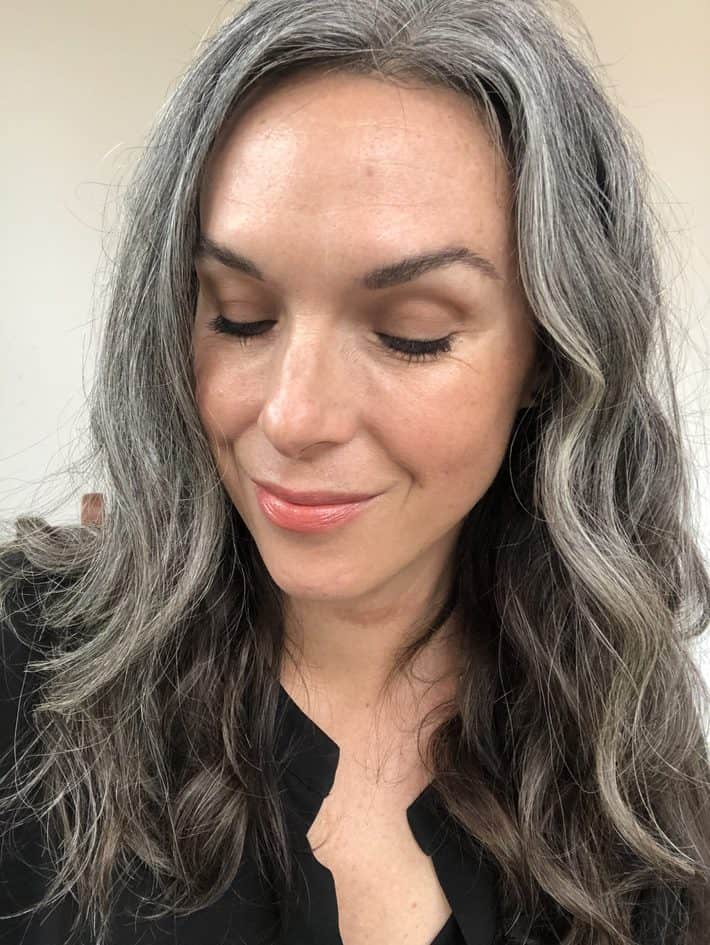
Is “organic” hair dye cleaner than conventional hair dye?
Where do we go from here? First, let me say this is totally an individual decision and everyone has the right to color their hair without being judged. This is a super hard decision to make for some, myself included, because the outcome is so visual. Our goal is for you to be informed of all the information, so you can make the best decision FOR YOU. Full stop.
The tipping point here is education and understanding the difference between marketing lingo vs. what’s actually in products.
It’s what the company is NOT saying—that’s what buyers really need to know.
For example, some companies will boast that their product is “ammonia free” or “PPD free.” First of all, ammonia is an archaic ingredient. It is still used, but it’s not a staple ingredient like it used to be. Parallel to buying chicken, when the label says “hormone free”—hormones are not used in chicken anyway.
It’s like saying there is no steak in your ice cream…yeah we know!
So, what are they using to replace ammonia? Is it ingredients like ethanolamine and triethanolamine? And are they also using chemicals like PTD (para-toluene diamine) or p-aminophenol as a substitute for PPD? If the answers are yes and yes, these formulas could be just as questionable as “conventional” hair dyes.
“It’s probably true that if these materials (PPD and PTD) were invented today, their use in cosmetics would not be permitted but they remain in use…as no effective replacements have been found.”
Royal Society of Chemistry
I’m not here to convince you to dye your hair or not. That’s is 100% up to you and to feel good about it either way. The one point that I really want to drive home here is when a hair dye is labeled “organic” or claims to be “natural,” don’t be fooled into thinking you are getting a “healthy” alternative. I hear so many people say, “I know it’s not perfect, but at least it is a little better.”
It’s not really. It’s all the same active ingredients, just boxed and labeled differently.
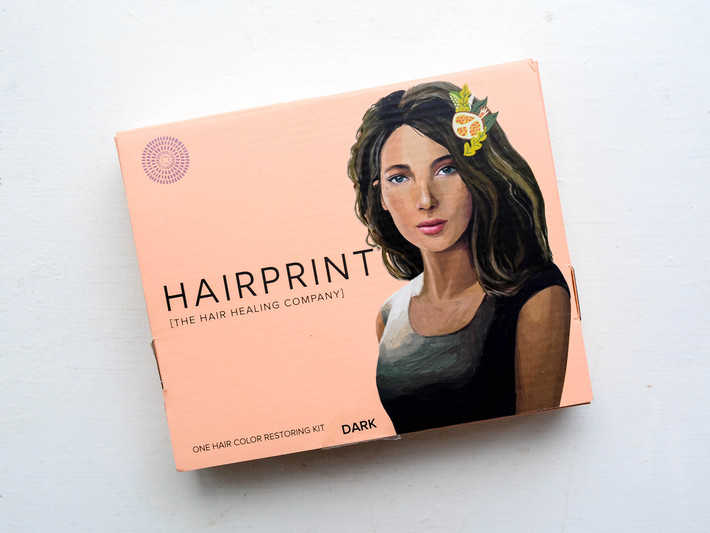
Other hair dye alternatives
What are some other options? Well there are a couple. Supplements, henna and HairPrint, to name a few.
I’m usually game for trying organics and natural alternatives, but the more I looked into henna, the more I was seeing things like, leave it on for 4-5 hours or OVERNIGHT (the ingredients look fabulous but lets be honest, overnight?! No thanks). Many reviewers said the color outcome was unpredictable and it didn’t last. Ruth Winter, author of A Consumers Dictionary of Cosmetic Ingredients says, “They are more difficult to apply, less reliable than manufactured dyes, and less predictable as far as color is concerned.” The reason for this is henna dyes only coat the hair temporarily; they don’t alter the hair like permanent dyes.
Or maybe supplements? Some of my readers mentioned diatomaceous earth, Brahmi Amla or another herbal remedy like He Shou Wu. While these may work, I’m personally a fan of less when it comes to supplements. I am a fan of instant gratification, though my going gray journey was NOT instantaneous (still, so worth it).
HairPrint was the closest I came to finding the golden ticket of organic hair dye. And even after that great experience, I chose to embrace my gray.
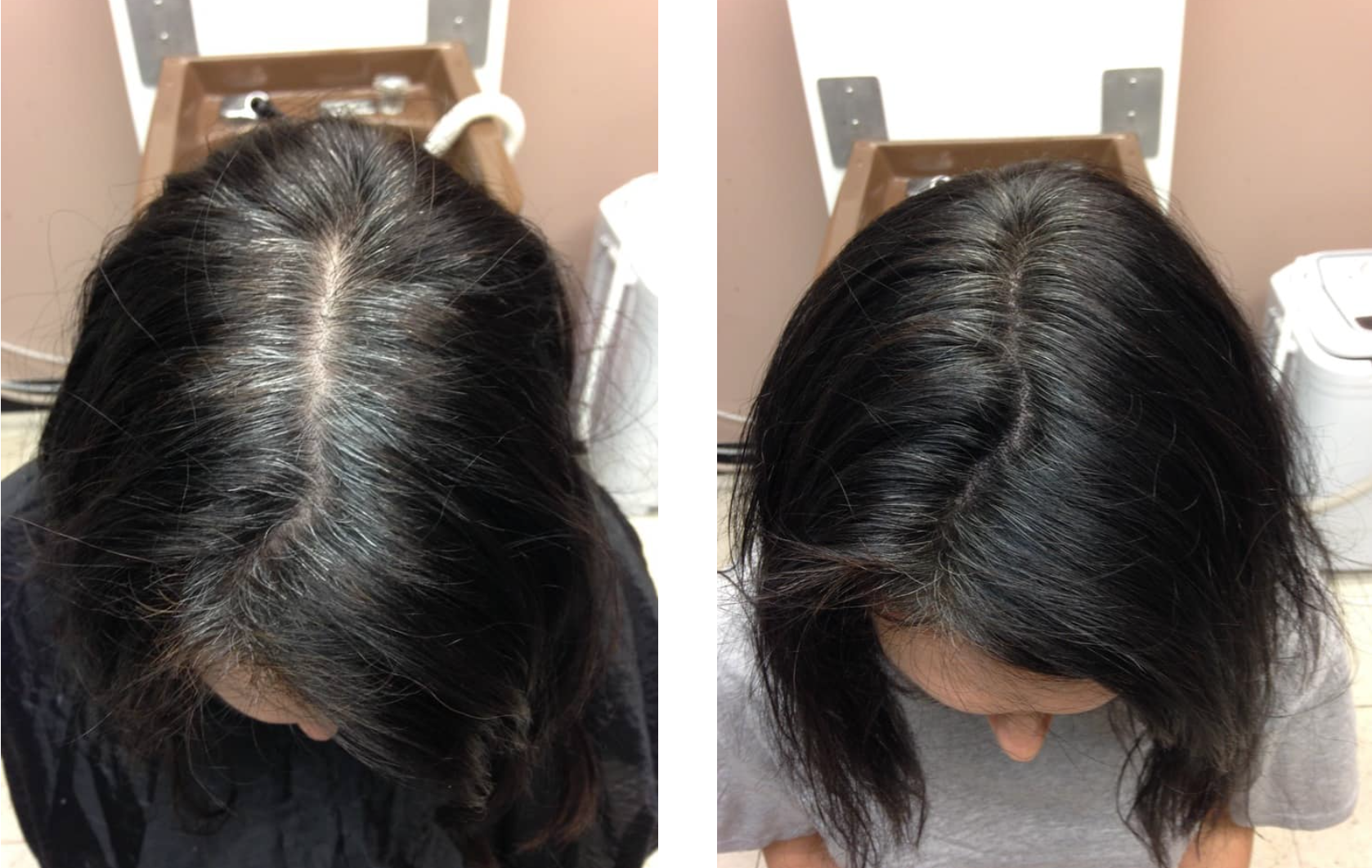
Organic hair dye FAQ
It’s not really. It’s all the same active ingredients as conventional dye, just boxed and labeled differently. Read my full study on organic hair dyes here.
HairPrint was the closest I came to finding the golden ticket of organic hair dye. Other things to try are supplements like He Shou Wu, and henna hair tints.
Organic and natural hair dye alternatives are the safest ones based on the ingredient list. We’ve found HairPrint, a dye alternative, to be the best for coloring hair.
It’s not really. It’s all the same active ingredients as conventional dye, just boxed and labeled differently. Read my full study on organic hair dyes here.
What’s your take on organic hair dye?
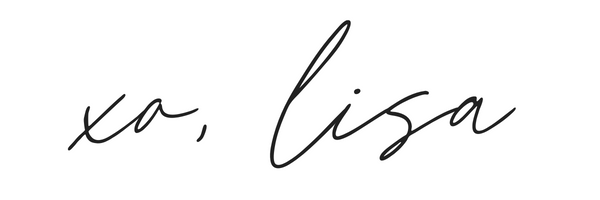
*This ingredient information was referenced from “A Consumer’s Dictionary of Cosmetic Ingredients,” by Ruth Winter, M.S. unless otherwise stated.

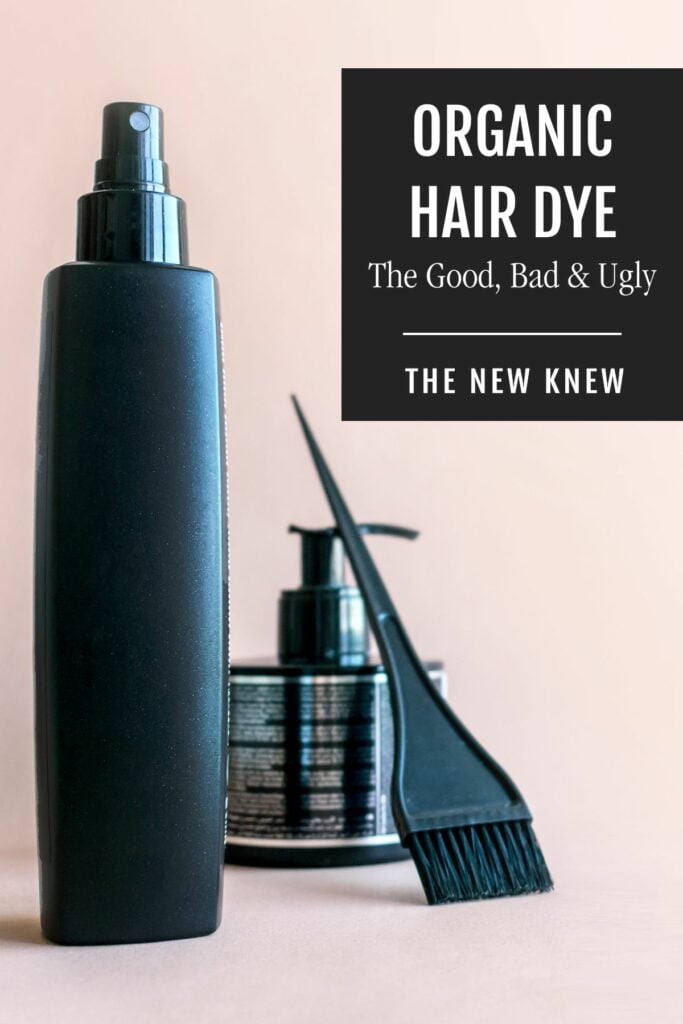
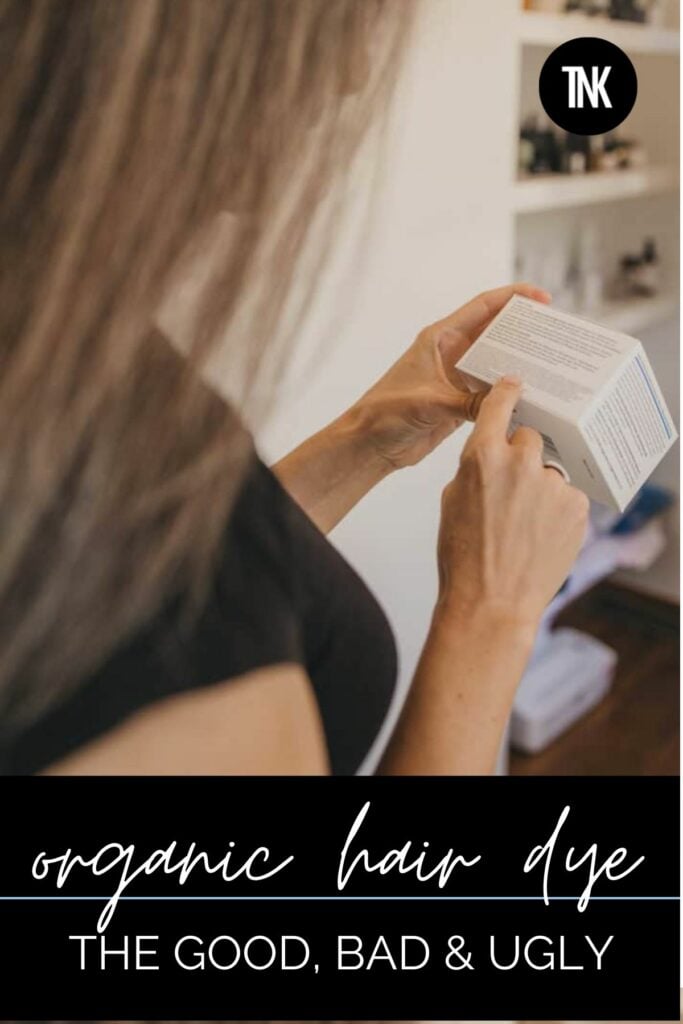
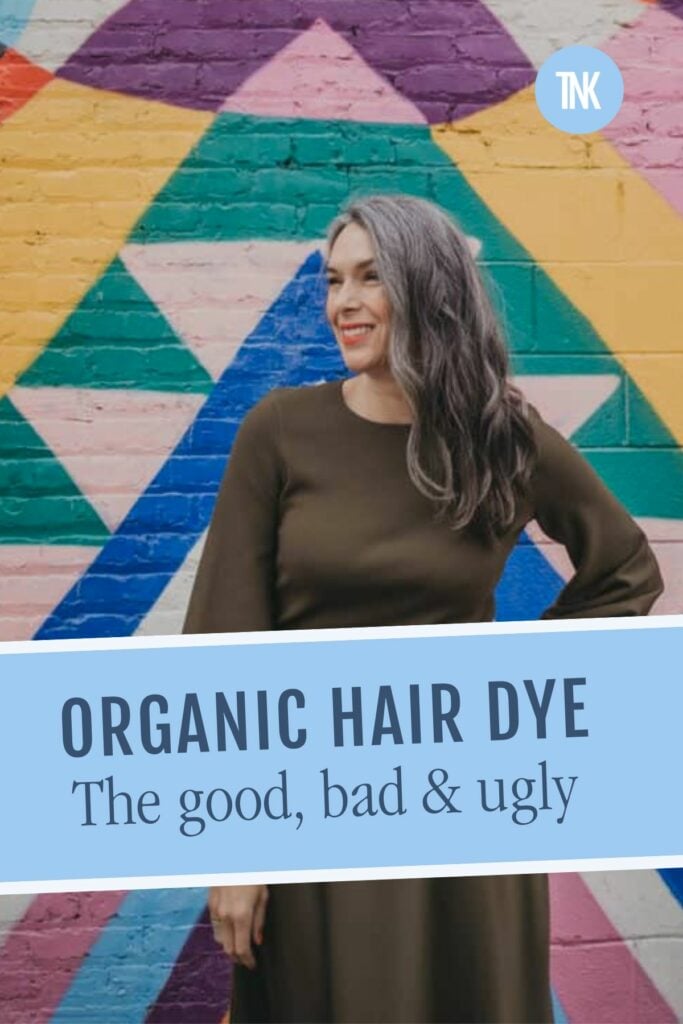
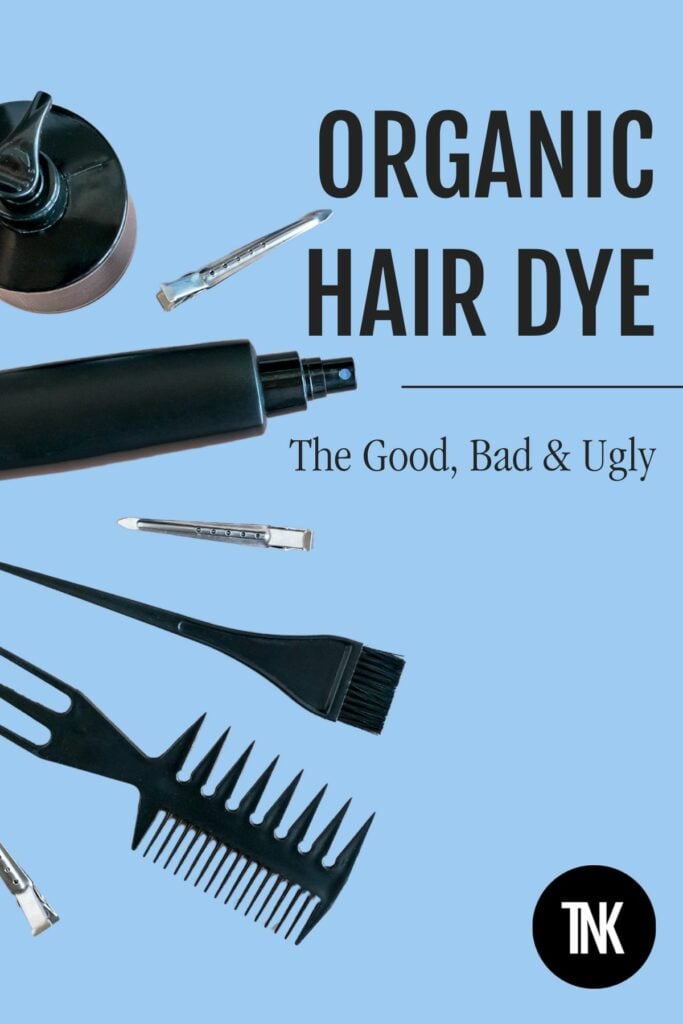
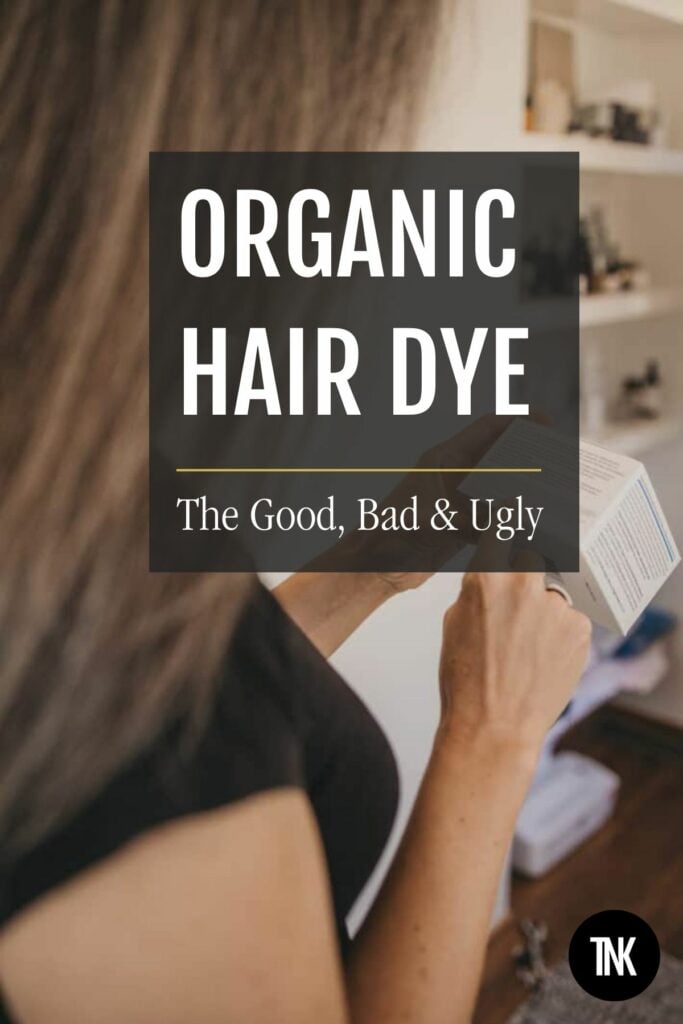
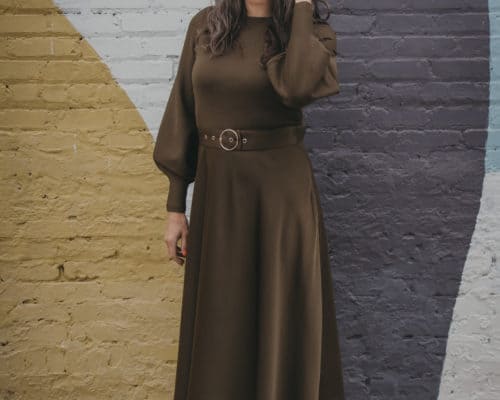
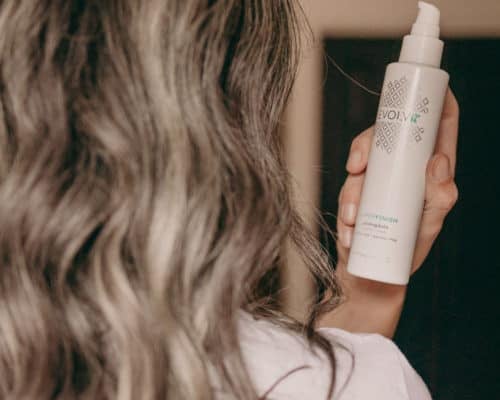
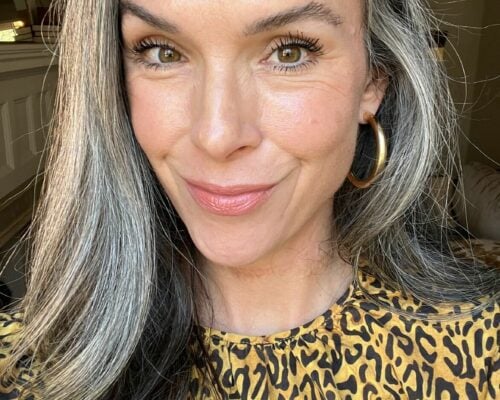
Darla
July 6, 2022Wow, this is a great article. I’ve colored my hair for years and a few years ago I started to go chemical free on household products, makeup, etc. Then I thought, “Shucks, I need to find a chemical free hair color.” You’re right they don’t exist. I appreciate you giving tips on the good, bad, better. I used Naturtint for my last color…but it’s not all it’s cracked up to be either. I just did a quick search on the internet, knowing the best ads that pop up have paid dearly for that to happen.
Lisa Fennessy
July 6, 2022Oh 100%. So true. Be sure to report back if you find something you like! xo, Lisa
Darla
July 6, 2022will do!!
Allan
March 27, 2023I’m a 57-year-old guy,
Still have a good head of hair but when gray very early.
Worried about the effect of toxic hair dye I started using dark coffee from expresso beans to darken my hair although it’s not perfect it definitely covers the gray more and more and I understand that caffeine has a beneficial effect on the scalp
I’m looking to find a way to have it last longer because clearly it loses his effect that you take a shower but it definitely darkens the hair
Lisa Fennessy
April 10, 2023Hi Allan! This is an interesting approach. I’m glad you found something that works for you. There seems to be many types of supplements you can take now that are claiming to reverse gray hair. Since that is not my current goal, I haven’t tried them but they could be a good option for you. Also, check out Hairprint which is an effective nontoxic option I’ve used in the past. : ) Lisa
Jas
April 14, 2023So! After all this time, I tried Patricia Mulato color one and by golly it works!
No ppd, ptd, tds, peroxide, or rescinoral
Lisa Fennessy
April 17, 2023Hi Jas! Did you ask for a full ingredient list? I would love to see what they are using as their active ingredients. If you have that please share it! Sometimes what companies will do is sub out buzz word ingredients for adjacent ingredients that are just as concerning. Would be interested to see if that is the case here too. xo, L
Jas
April 17, 2023Hi Lisa,
Ive checked the entire list and nothing dodgy in it whatsoever to cause me itching in my head and well the colour was supposed to be dark brown, but i admit, its a bit too warm atm but they said i could negate the warm impact(reddy yellow) by using a ph neuatral shampoo before colouring and using their black colour. If that works, its changed my life and i will be forever grateful to them. Elumen wasnt as good, as it stained my entire scalp to pitch black. but this could be the ONE!
ingredient list:
INGREDIENTS
3.0: AQUA/WATER/EAU, CAPRYLYL/CAPRYL GLUCOSIDE, CETYL ALCOHOL, ISOPENTYLDIOL, POLYGLYCERYL-6 DISTEARATE, BASIC BLUE 99, HC BLUE NO. 2, JOJOBA ESTERS, SALVIA HISPANICA SEED OIL, THEOBROMA GRANDIFLORUM SEED BUTTER, ROSMARINUS OFFICINALIS (ROSEMARY) LEAF EXTRACT, ZANTHOXYLUM BUNGEANUM FRUIT EXTRACT, PRUNUS CERASUS (BITTER CHERRY) FRUIT EXTRACT, RUBUS FRUTICOSUS (BLACKBERRY) FRUIT EXTRACT, HYDROLYZED WHEAT PROTEIN, POLYGLYCERYL-3 BEESWAX, AMINOMETHYL PROPANOL, GLYCERIN, MELANIN, HYDROXYETHYLCELLULOSE, DISPERSE BLACK 9, HC RED NO. 3, ALCOHOL, PHYTIC ACID, BASIC BROWN 16, SODIUM SULFATE, BASIC RED 76, ACID VIOLET 43, BASIC YELLOW 57, OLEYL ALCOHOL, TOCOPHEROL, PENTYLENE GLYCOL, ETHYLHEXYLGLYCERIN, HC YELLOW NO. 2, ACID BLACK 1.
Lisa Fennessy
April 22, 2023Thanks Jas! Is this the ingredients for the color or the developer? There should be two ingredient lists.
Ella
May 14, 2023Stress from lockdowns caused me to abandon my shoulder length hennaed hair. Most of it’s a silvery grey colour now, which looks beautiful but also tends to frizz and become unruly, veering into mad cat lady territory. I still have the ends of my hair in my old henna colour, which must be at least three years’ old, and the colour looks beautiful.
So today I’m questioning whether to resume my henna routine or not. It’s actually quite easy. I use body art quality henna powder and make a large batch with boiling water in a Pyrex bowl, leave it to cool overnight and decant into glasses lined with bin liners. I seal these with wire ties and freeze them for later use, so that when I need to touch up my roots I simply take a frozen portion of henna from the freezer and defrost it in the microwave.
Regarding application. It is time consuming and messy – two mirrors and gloves are required. I use a pastry brush to apply the henna mixture along partings. (Vaseline around the hairline prevents stains.) I then cover my hair with plastic wrap for two or three hours. Overnight is not required.
After rinsing and washing my hair I leave it to air dry. The results are a vibrant fire-red richness that I’ve not found with any other hair dye. Over the next few days and months the colour darkens to a reddish brown. Henna is wonderful. What’s not wonderful are the roots that begin to show after a few weeks.
Jas
August 3, 2023There is no developer, it depends on opposite ions attracting to each other to deposit the colour. So far, so good, I will stick to it as it doesnt itch
Ann
September 4, 2023Hi Lisa, what do you think about the Patrice Mulato Color One? Ingredients look okay but I am not 100% sure how
Lisa Fennessy
September 22, 2023Hi Ann! Thanks for your question. This looks similar to something like Overtone. Both of these lines use the Basic Dyes to drive pigment. We talk about the some of the Basics in this post and this post. There are also several ingredients here that we personally avoid—we have those listed out in our No Thanks List. BUT considering there are no healthy swaps for hair dye, if you take a brand like this and compare it to conventional hair dye, I would agree it’s a better option in general. I can tell from the inclusion of the Basics that it works to dye hair too. I also want to point out I don’t like the marketing here when they say things like, ” It brings out the natural hair pigmentation”….no it doesn’t. It’s dying your hair. That’s so misleading. Also it’s a personal pet peeve when brands tote “made in France” as if that’s a claim to fame making it automatically clean. Again, that doesn’t mean jack. Also they say they are here to “reveal the natural beauty of women”…by dying their hair?! It’s just like they are talking out of both sides of their mouth…and when I see retoric like this I’m like; Now I don’t believe anything you are saying. You know what I mean? xo, Lisa
Deborah Mollica
October 11, 2023Hi, I don’t want to have gray hair, I know some women look great in it but I am not one of them. Would you post the names of the top 3 brands that would be a good alternative or safer? I have been going to the salon and had so called “organic color” for many years. I want to start to color my hair at home because of the expense. Can you help?
Thank you.
Lisa Fennessy
October 17, 2023Hi Deborah! The only one that comes to the top of my mind is Hairprint – have you looked into that? I am going to dig in a little deeper here though and see if we can some up with a more accessible answer.
Lisa
October 25, 2023I see Biolage makes a plant based haircolor with henna. Is it a safer salon option? I have considered getting henna and doing it myself but I don’t want to fool with it.
Lisa Fennessy
October 27, 2023Hi Lisa! Henna will always be a safer option (ingredient wise) over traditional hair dye. Radico has a certified organic option.